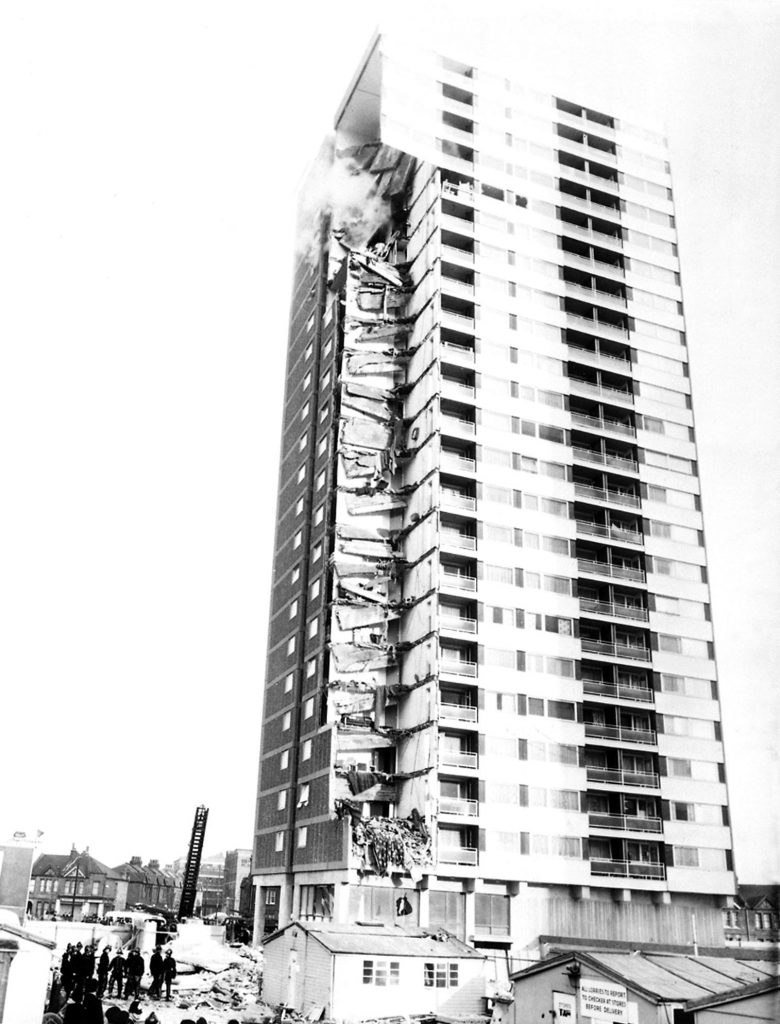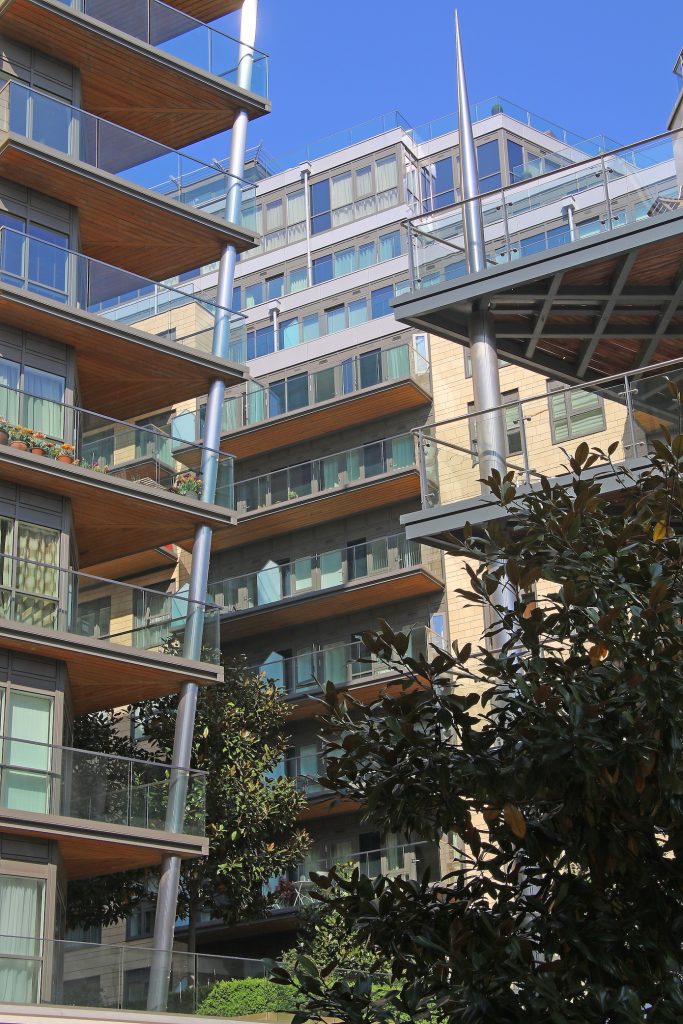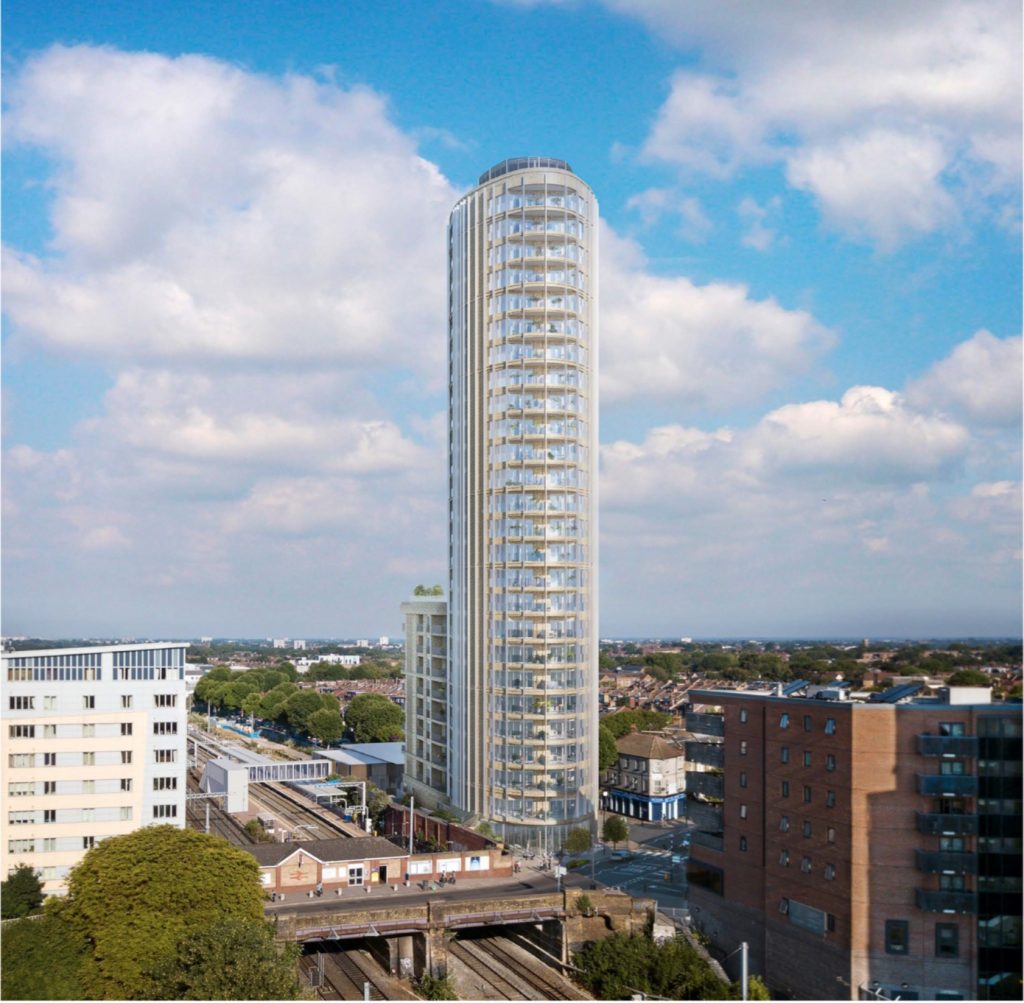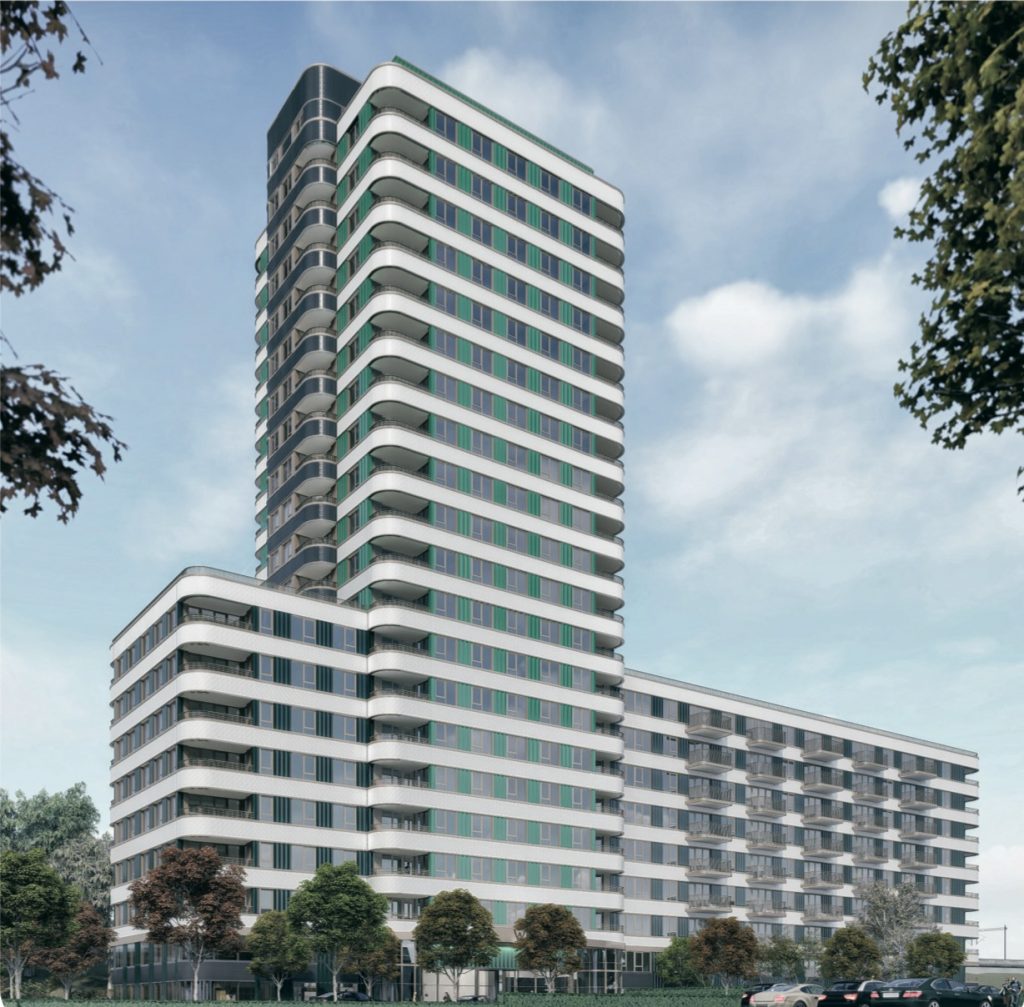Eric Leach, co-founder of Ealing Matters, sets the current vogue for high-rise buildings* into its historical context.
Insanity is doing the same thing over and over again and expecting different results.
Albert Einstein
A Brief History of UK Towers
Building tower blocks in the UK began after World War 2. In 1951 the first residential tower in the country was ‘The Lawn’ in Harlow, Essex. Tower blocks were the chosen destinations for people cleared out of inner-city slums. Belfast, Birmingham, Glasgow, London, and Manchester led the way. The 1960s was the peak period for this tower building. In some of these towers happy communities emerged but in many they did not.
1960s Towers: Ghettos for the Poor
Well documented problems in these towers included unhappiness, crime, vandalism, substance abuse, stress, social isolation, insecurity, mental illness, suicide, poor maintenance, fire risks, juvenile delinquency, truancy, gangs, violence, lift breakdowns, unsuitability for young children and the elderly, and many kinds of anti-social behaviour. These towers were, and still are in many cases, ghettos for the poor.
The safety of tower blocks has been questioned many times – nowhere more so than in 1968 with the partial collapse of Ronan Point and with fatal fires at Lakanal House in 2009 and at Grenfell Tower in 2017.

In the 1980s Birmingham decided to demolish all its tower blocks. Seven of them were demolished between 2002 and 2012. However a new 61 storey, 193 metre high tower is planned with 500 flats in Broad Street. Many ‘old’ towers have also been demolished in London with Hackney claiming some kind of record in February 2002 by demolishing its seventeenth tower block. Some residential tower blocks were successfully renovated and re-purposed as flats for young professionals. Even more recently some office tower blocks were similarly re-purposed as residential blocks, without needing Planning Permission.
There are a few outstanding – and still standing – 1960’s tower blocks. The Barbican Estate in the City of London opened in 1969 eventually with 2,088 flats. At a rental of £12/week these concrete blocks were initially criticised for their ugliness. Over time owner occupation took over. The estate got a major boost in 1982 when the Barbican Centre opened co-located in the estate. It has become a major world arts and music centre.
In West Ealing, the Dean Gardens and Green Man Lane tower blocks were built in the 1970s. For decades they have been dangerous, poorly maintained and intimidating living areas. In 2006 Ealing Council decided to demolish them and replace them with ….new tower blocks. Demolition and building is well underway.
As in many places in England ownership and management of flats in old and new towers has primarily passed from Local Authorities to Housing Associations. Housing Associations, which began life housing the homeless, are now largely unaccountable property developers competing with the likes of Barratt, Persimmon, Taylor Wimpey etc. Some of those tenants who took up Margaret Thatcher’s dream offer and bought their flats are going through a nightmare, brought about by ‘regeneration’. Compulsory Purchase at ‘being demolished’ prices makes it impossible for these people to afford any flat within their community. They have to re-locate to an area where flats are much cheaper to buy.
A more recent phenomenon is ’luxury’ residential towers. A staggering 541 new 20+-storey luxury towers are planned or are being built in London. New London Architecture’s (NLA’s) 2019 annual survey revealed 175 20+ storey towers planned or under construction in outer London.
In the centre of Ealing a number of these new towers have been built in recent years at Dickens Yard. It’s clear that no-one is living in some Dicken’s Yard flats – with no lights illuminated during darkness. This could be because no-one has bought them, the owners are living somewhere else (possibly in Asia, Russia, China etc) or no-one wants to pay the high rentals. In March 2019 the blog boingboing.net estimated that there were 3,000 unsold luxury flats in London and 14,000 advertised for sale. On 17 August 2019 Zoopla was advertising 431 flats for sale in Ealing.
Housing Problems in Ealing, London and England

Ealing has a Housing Waiting List of 12,000. For a variety of reasons very few, traditional ‘Council Homes’ (at 40% of market rate rental) have been built in recent years either in Ealing or nationally. Successive London Mayors have wanted to attract more people to come and live in London. It always seems like a million more is the wish list number. However, buying a luxury flat in London has proved to be an attractive investment opportunity for rich people abroad. The five Crossrail/Elizabeth Line stations to be built in Ealing offer the prospect of direct, high capacity access to the West End, the City and Canary Wharf. This is proving an inviting cocktail, especially as prior to June 2016 the UK appeared to be a stable, predictable economy. Berkeley Homes/St George bragged in 2012 that 50% of its Dickens Yard flats would be purchased by people living outside the UK. This foreign sales channel has shrunk somewhat since June 2016 when Brexit created, and maintains, economic/ market uncertainty. The current Trump inspired world wide trade ‘war’ is adding to this uncertainty.
Most tower block flats, whether built recently, being built or planned in Ealing do not solve any major local housing problem. They are too expensive to buy or rent for most people – especially young adults. The median annual salary for workers in full-time employment in Ealing was £30,622 in 2018 (Office for National Statistics, ASHE Table 7) compared with £37,086 across London and £29,588 in the UK as a whole. Without the help of the Bank of Mum and Dad these new flats are way beyond their reach. On 26 January 2018 ‘The Guardian’ estimated that 1,000 luxury flats built in London in 2017 had failed to find a buyer. According to boingboing.net in March 2019, 58% of the demand for flats is for ‘affordable’ housing, but only 25% of the housing under construction is affordable.
The Mayor of London’s ‘preferred Affordable Housing tenures’ are complicated and lack any financial clarity. In the Low Cost Rent category we have Social Rent and London Affordable Rent. In the Intermediate category we have London Living Rent and London Shared Ownership. Apparently Social Rent will be substantially below 80% of Market Rent rates, but above ‘traditional’ Social Rent rates. Social Rent rates, called in the past Council Rent rate, were up until the 1990s 40% of market rent rates. In recent years however they have risen up to 55%.
Shared Ownership was introduced by the Government in the late 1970s. The schemes are administered by Housing Associations. It’s now becoming clear that Shared Ownership is no bed of roses. Well documented problems include high maintenance charges, no sub-letting, purchasing an increased share can be expensive, possible restrictions on structural changes – even on redecoration – and the risk of negative equity. Anecdotally selling a Shared Ownership flat is an extremely complex and frustrating process. At best for many shared owners it represents a secure tenancy.
Only 6,500 new Social Rent homes were built in the whole of England in 2018. Shelter estimates there are currently 3.1 million households needing a Social Rent home. Hardly any new homes for families are being built in Ealing.
The New Towers’ Phenomenon – Enclaves for Childless Young Professionals
Collecting data about living in these new ’luxury’ towers is difficult. The developments are typically gated communities with what looks initially like public space but is in fact private space – sometimes ‘policed’ by private security firms.
A London School of Economics study by Kath Scanlon published on 27 March 2019 collated interview comments from residents in 14 high density tower blocks in London. The tower heights range from 12 to 43 storeys. 11 of the blocks are fairly new and the three tallest opened in 2010, 2011 and 2013. 50% are owner occupied, 35% are private rented and just 15% are social rented. 71% of the residents were aged between 20 and 40 years old. Overall the ranked reasons for living in their tower were transport links, price and neighbourhood. They predominantly chose ‘modern’ and ‘new’. They enjoy good views, plenty of light, and good access to outdoor space. Only 24% felt there was a strong sense of community. 34% didn’t know anyone else in the tower. Only 13% respondents had children. In the three tallest towers (43, 43 and 30 storeys) it was just 4%.
Towers Coming to Ealing

My research reveals that there are 26 20+ storey towers recently built, being built, planning approved or developer announced in Ealing. If 10-storeys or more towers float your boat then the number in Ealing soars to 80. Included in each of these totals are six 40+ storey towers.
The developer of one of the planned towers in West Ealing claims it will be the tallest most affordable tower block in the UK. But the minimum annual salary you would need to ‘afford’ a Southern Grove/Metropolitan Thames Valley one bed flat in the 26-storey tower in Manor Road is £44,000. This salary ‘towers’ above the average Ealing (£30,622), London (£37,086) and national (£29,588) salary levels.
Why Towers – and Why So Many?
Quite frankly many people and especially families with small children would not choose to live in a tower block (as demonstrated in the LSE research). The popular choice is to live in a house or in a low-rise block of flats. However national, regional and local planning guidelines support the building of tall residential tower blocks. Ealing Council’s Planning Committee regularly approves Planning Applications for such towers, even when it’s blindingly obvious that the residential tower blocks satisfy no known local housing need. However with regional and national planning guidance as they are, Ealing Council clearly fears turning down applications because of the applicant Appealing and winning. Ealing Council is loath to bear the costs of Appeals.

Sadly Ealing Council’s current (2012) Local Plan is neither use nor ornament. Tower block proposals are sprouting up in many parts of the borough for which no such planning provision has been made. Individual examples include the 22-storey tower/305 flats behind Tesco in Perivale (since rejected by Ealing Council’s Planning Committee) and the 19-storey tower-led 1,965 homes on the former GSK site in Greenford. However one of the biggest planning mistakes is the plan for ‘3,320‘ additional mixed tenure homes in Southall town centre by 2026’. My detailed research over previous weeks has revealed that in the centre of Southall recently built, being built and planned new homes number 12,776. ‘Hosting’ many of these homes will be 20 tower blocks of 10 storeys or more of which eight which will be 20 storeys or more.
It’s also fair to presume that building tower blocks is more profitable for land owners, property speculators and home builders than building houses. As for Local Authorities the more homes (flats) that are built, the more Council Tax revenue is generated – irrespective of whether there is a lease holder involved or the flat is occupied.
What Might Stop or Slow Down the Towers’ Juggernaut?
Changes to national, regional and local planning guidelines would be a big help, but for all kinds of reasons that’s unlikely to happen in the near future – if at all. Local Planning Authorities (LPAs) could try to circumvent national (and regional in London) planning guidelines and restrict the number, height, location and even the existence of new towers. Ealing Council is supposedly working on a new Local Plan but there has been as yet no involvement with residents, residents’ groups or community organisations.
What would help is a sea-change in the culture of LPAs with Councillors and Planning/Regeneration Officers willing and eager to work with local residents and businesses to create a ‘human scale’ spatial plan. In this dream scenario a balanced, long term plan could emerge through consensus which would attempt to meet current and future local needs for happiness, jobs, sustainability, housing, education, health, social care, public/civic services, business, culture, sport, transport, open space and retail.

Residents can and do organise protests against tower building plans. If a great amount of ‘noise’ is generated in the local press, in Councillor and Officer email boxes, on the street, in petitions and even through civil disobedience, the LPA might just be influenced. A current example of a highly motivated group of anti-tower residents is the Stop The Towers campaign in West Ealing (www.stopthetowers.org). Also on Saturday 14 September 2019 over 100 hundred protesters confronted Planning Committee members who were viewing the 305 flats/22-storey residential tower site behind Tesco in Perivale. 455 objections had already been lodged on the Council’s planning web page. The LBE Local Plan 2011-2026 states that for Perivale ‘the planned housing potential from large sites is zero homes’. The planners, nevertheless, are recommending approval.
Specialised technical help can be obtained from paid professionals and talented amateurs who can slow down or exceptionally kill off tower plans. Discovering covenants, nuances in planning guidelines and significant errors in Planning Applications can all pay dividends.
Finally, and not to be recommended, a major recession could result in land owners/developers/LPAs abandoning their tower building plans. Such a recession could be just weeks away if we crash out of the EU with no deal. However, for the existing towers with unsold flats, the tower owners could be forced to sell flats off at bargain basement prices to Local Authorities and Housing Associations for Social Rent housing. No doubt the 1960s to date litany of anti-social behaviour, substance abuse, social isolation, vandalism, poor maintenance, mental health problems etc, etc would then come back to haunt our new generation of tower blocks.
*Low-rise and human scale are generally viewed as residences/blocks of up to five storeys. The term tower blocks comes into play at eight storeys and above. High-rise is blocks of 20 storeys or more.

